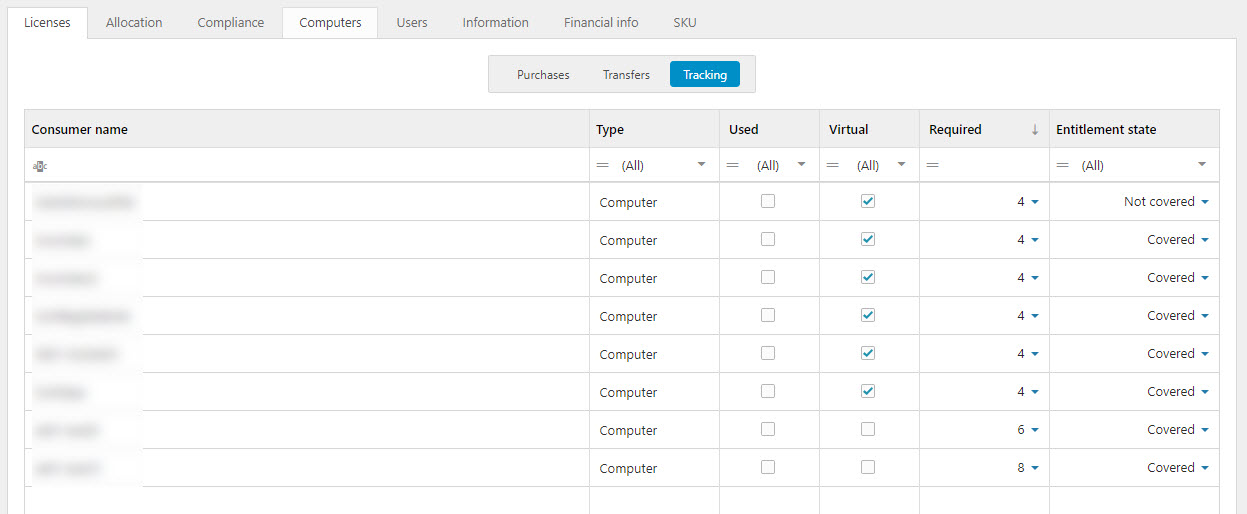Microsoft SQL Server 2012 Enterprise
The following example refers to the application Microsoft SQL Server 2012 Enterprise.
In the compliance summary of the application (blue box) we see that:
-
The metric of the application is set to Cores
-
There are 0 licenses with that metric for this application
-
There is a license requirement of 24 licenses
-
There are 0 licenses available for coverage
-
We are 24 licenses short
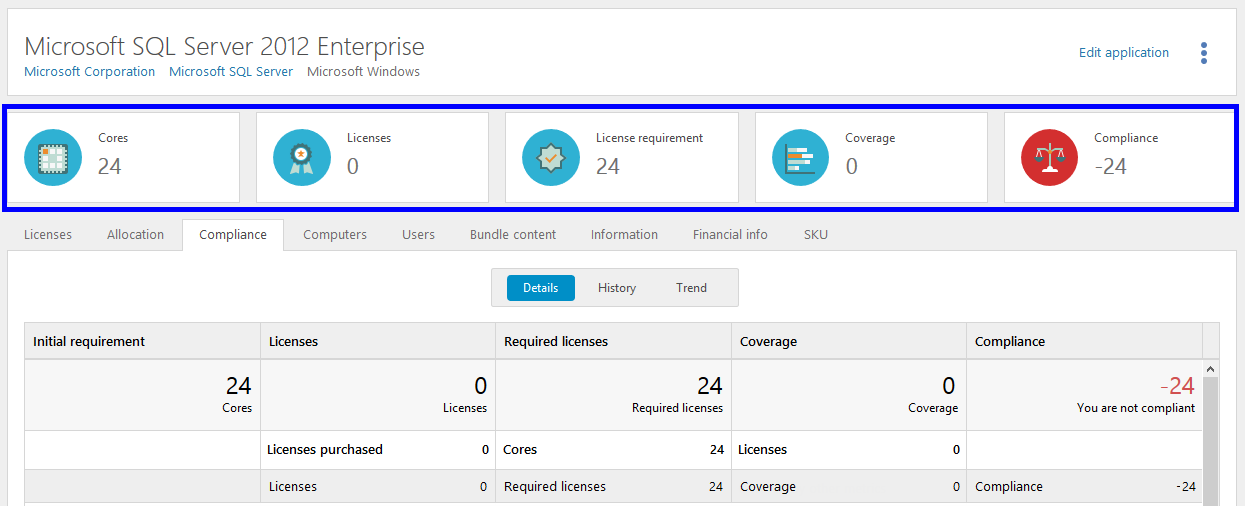
Default metric
The metric of this application is set to Cores.
The application is detected on hardware that has a total number of 24 Cores, which corresponds to 24 Required licenses. No adjustments have been made.

To verify that no consumers are covered:
- Click the Licenses tab, and then click Tracking.
A list of all consumers that require a license is shown. There are six consumers and none of them is covered.
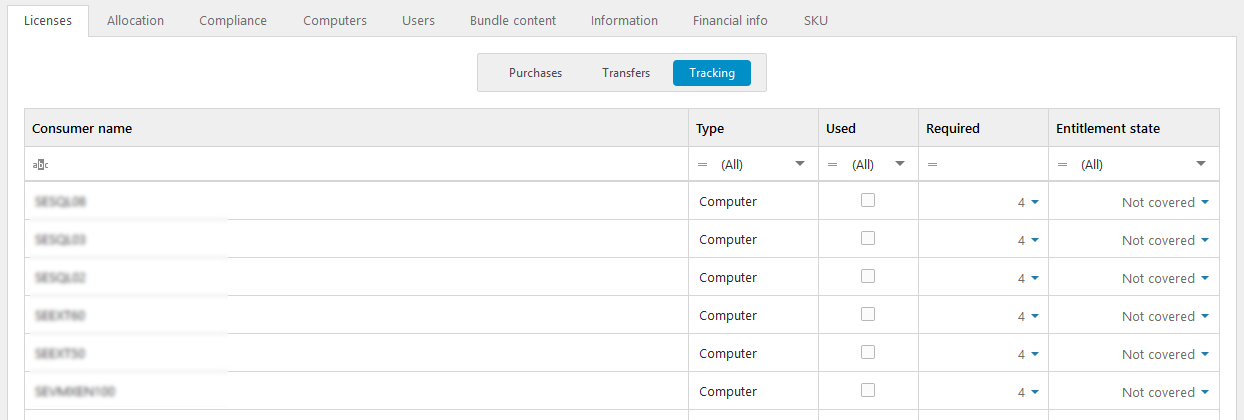
Decide on licensing
Take into consideration how the consumers are set up and decide how to license them in the best way.
As support, use the report License tracking per computer, and add the columns Datacenter name and Host computer name from the Column selector.
In this example, we have three physical hosts.
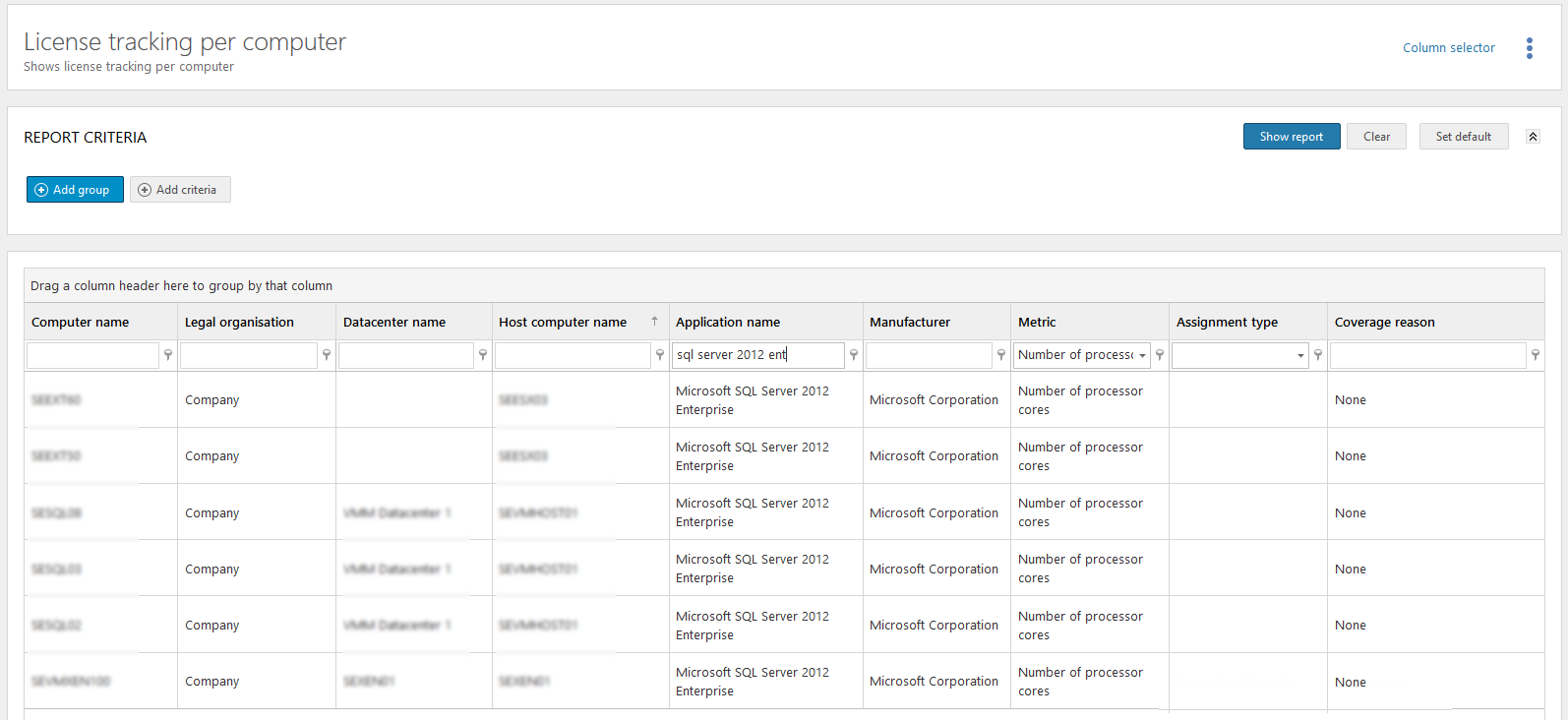
We decide to cover two of the physical hosts with VM use rights. We buy and register a license for Microsoft SQL Server 2014 Enterprise Core with:
-
quantity 120 and metric Number of processor cores
-
upgrade rights
-
downgrade rights
-
cross edition rights
-
VM use rights
When registering the license purchase we assign licenses to the two physical hosts according to their requirement of licensable cores.

After compliance has been calculated, we see that the application Microsoft SQL Server 2012 Enterprise now has coverage due to VM use rights. License requirement is adjusted with the number of cores from the physical hosts to which the licenses were assigned.
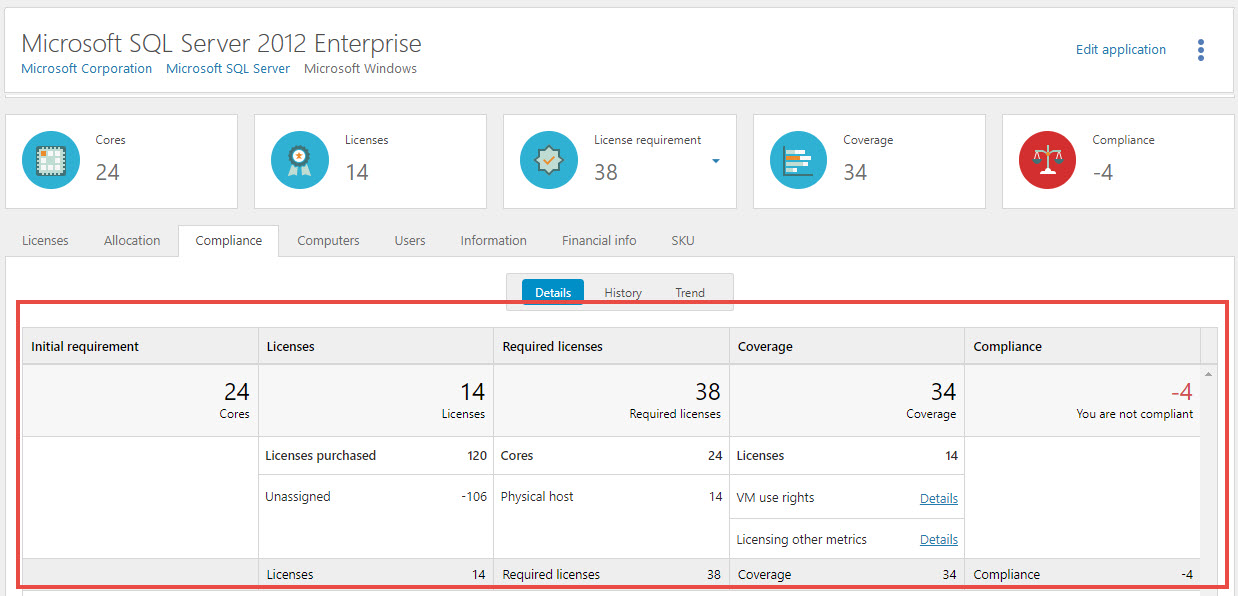
To verify that consumers are now covered:
- Click the Licenses tab, and then click Tracking.
A list of all consumers that require a license is shown. Note that the list now also contains the physical hosts, as they are counted towards the requirement. Seven out of the eight consumers are now covered. That is, five of the virtual machines and two hosts are covered.
